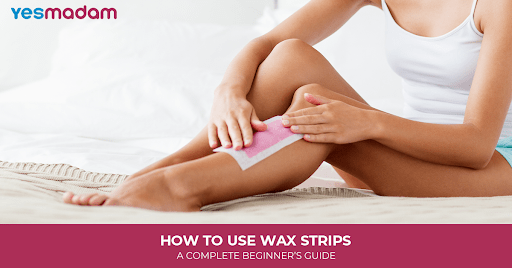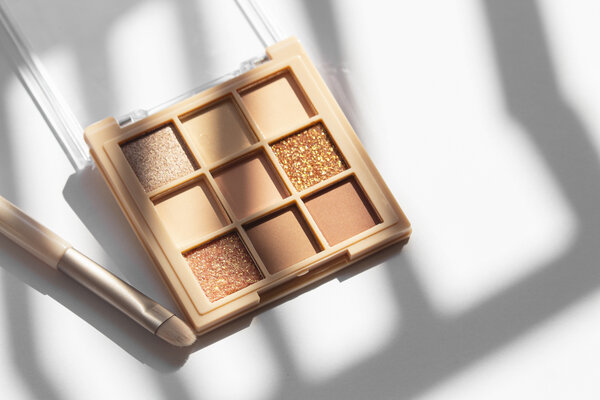
How to Use Wax Strips: A Complete Beginner’s Guide
If you’ve ever wondered how to use wax strips properly, you’re not alone. Waxing at home can feel intimidating the first time, especially when you’re not sure which side of the strip to use, how to prep your skin, or whether it’s safe to use on your face. The good news? Wax strips are designed to make at-home hair removal easy, quick, and affordable—no salon appointment required.
In this guide, we’ll cover everything you need to know, from preparation to aftercare. You’ll also find helpful tips about hand wax strips, face waxing, and the most common mistakes to avoid so you can achieve salon-like results from the comfort of your home.
Table of Contents
Why Choose Wax Strips Over Other Hair Removal Methods?
Before diving into the step-by-step process, it’s worth asking: why wax strips? Here are a few reasons people love them:
- Convenience: No heating pots of wax or dealing with mess—just peel, stick, and pull.
- Cost-Effective: One box of strips can cover multiple sessions, saving money compared to salon visits.
- Less Regrowth: Unlike shaving, waxing pulls hair from the root, meaning smoother skin for longer.
- Beginner-Friendly: With clear instructions, anyone can get the hang of it in a couple of tries.
Step-by-Step Guide on How to Use Wax Strips

1. Prepare Your Skin
Good waxing results start with preparation. Cleanse the skin thoroughly to remove oils, lotions, or sweat that may prevent the wax from sticking properly. Gently exfoliate a day before to lift dead skin cells and prevent ingrown hairs.
2. Warm the Wax Strips
Most wax strips are ready-to-use, but they work better when slightly warmed. Rub the strip between your palms for about 10–15 seconds until it softens. This helps the wax adhere better to the hair.
3. Know Which Side of Wax Strip to Use
One of the most common beginner mistakes is confusion about which side of wax strip to use. The answer is simple: the wax-coated side should always be placed directly onto your skin, pressing firmly in the direction of hair growth.
4. Apply the Strip Correctly
Smooth the strip onto your skin in the same direction that your hair grows. This ensures maximum grip when you remove it.
5. Hold Skin Taut and Remove Quickly
Hold your skin taut with one hand, then use the other to pull the strip back in the opposite direction of hair growth in one quick motion. The faster you pull, the better the results—and the less pain you’ll feel.
6. Post-Wax Care
After waxing, wipe away any leftover residue with the oil-based wipes included in most kits or use a gentle natural oil like coconut oil. Avoid hot showers, exfoliation, or sun exposure for at least 24 hours to prevent irritation.
Which Side of Wax Strip Should Be Used?
This question deserves its own spotlight because it’s a frequent source of confusion. To clarify: the side with the sticky wax goes directly on your skin. The backing paper protects the wax until you’re ready to use it. If you accidentally apply the non-wax side, it won’t remove hair effectively. Always double-check before application.
How to Use Wax Strips on Face

Facial skin is delicate, which means extra care is required. Here’s how to do it safely:
- Choose face-specific strips. They’re smaller and gentler than body strips.
- Cleanse your face. Remove any makeup, oil, or dirt.
- Apply the strip carefully. Place the wax-coated side over the area you want to treat (like the upper lip or chin).
- Pull against hair growth. Keep it quick to reduce discomfort.
- Soothe the skin. Apply aloe vera gel or a calming lotion to reduce redness.
Avoid using wax strips on broken skin, active acne, or extremely sensitive areas of your face.
Hand Wax Strips: Are They Worth It?
Yes, hand wax strips are an excellent option if you have noticeable hair on your arms or hands and prefer smooth skin without constant shaving. They’re pre-cut into smaller sizes, making them easier to use on narrower areas. The process is the same as body waxing: apply the wax side to your skin, smooth it down, then pull quickly in the opposite direction of hair growth.
Tips for a Pain-Free and Effective Waxing Experience
- Trim longer hair. If hair is over 1.5 cm, trim it slightly for better results.
- Stay consistent. Waxing regularly makes hair grow back finer and sparser over time.
- Work in sections. Don’t try to wax large areas at once; smaller sections give better results.
- Mind the direction. Always apply strips in the direction of growth and remove against it.
- Breathe. Exhale as you pull the strip—it helps distract from the sting.
Common Mistakes to Avoid When Using Wax Strips
- Not prepping the skin properly. Skipping cleansing or exfoliation can cause poor results.
- Pulling upward instead of backward. Always pull parallel to your skin, not away from it.
- Using on sensitive or broken skin. This can cause irritation or damage.
- Reusing strips too many times. Most strips are effective for one to two pulls at most.
Benefits Beyond Hair Removal
Wax strips don’t just remove hair—they also exfoliate by taking away dead skin cells, leaving your skin smoother and brighter. Over time, many users notice softer regrowth and fewer ingrown hairs compared to shaving.
Conclusion
Learning how to use wax strips is easier than it seems once you understand the basics: prep your skin, apply the wax-coated side in the direction of hair growth, and remove quickly against it. Whether you’re experimenting with hand wax strips or trying to figure out which side of the wax strip should be used, the key is practice and patience. Waxing at home can be just as effective as a salon treatment when done correctly.
With these tips, you’re well on your way to smoother, longer-lasting results, all from the comfort of your home.
FAQs
1. How do I prepare my skin before using wax strips?
Always cleanse your skin to remove oils and dirt. Exfoliate a day before to prevent ingrown hairs and ensure the wax sticks to hair, not dead skin cells.
2. Can I use wax strips if I have sensitive skin?
Yes, but choose strips formulated for sensitive skin and always do a patch test first. Avoid waxing over cuts, rashes, or sunburned areas.
3. How often should I use wax strips?
Most people wax every 3–4 weeks, depending on hair growth. Over time, you may notice slower and finer regrowth, reducing the frequency needed.
4. Do wax strips hurt more than other hair removal methods?
Waxing does sting, but the pain lessens with regular use. Pulling the strip quickly and holding the skin taut makes the process less uncomfortable.
5. Can I reuse the same wax strip multiple times?
You can usually use one strip for two small applications, but effectiveness decreases after that. Fresh strips work best for thorough hair removal.
6. Are wax strips safe to use on the face?
Yes, as long as you choose face-specific strips designed for delicate skin. Avoid using body strips on your face to prevent irritation.
7. What should I do if my skin turns red after waxing?
Mild redness is normal. Apply aloe vera gel or a soothing lotion to calm the skin. The redness usually fades within a few hours.
8. Can wax strips remove very short hair?
Wax strips work best on hair that is at least 2–3 mm long. If hair is too short, the wax won’t grip properly, leading to patchy results.
9. Is waxing better than shaving?
Yes, waxing removes hair from the root, resulting in smoother skin that lasts longer—typically 3–4 weeks compared to just a few days with shaving.
10. What should I avoid after waxing?
Skip hot showers, tanning, swimming, and heavy workouts for 24 hours. Your skin needs time to recover, and avoiding these helps prevent irritation.



